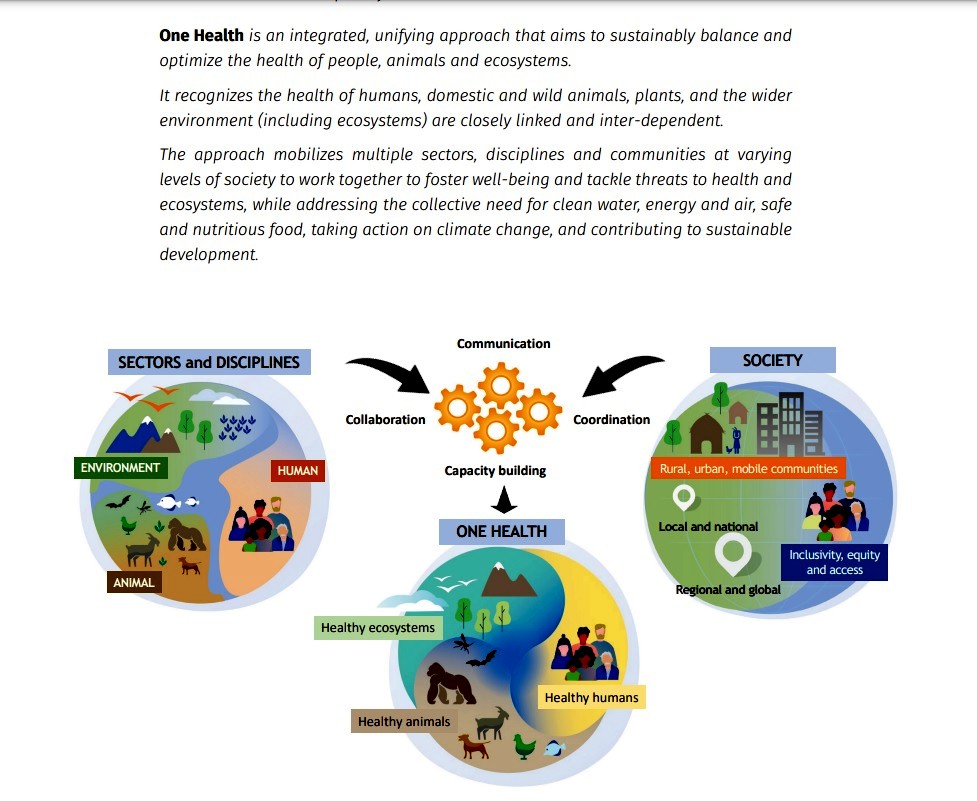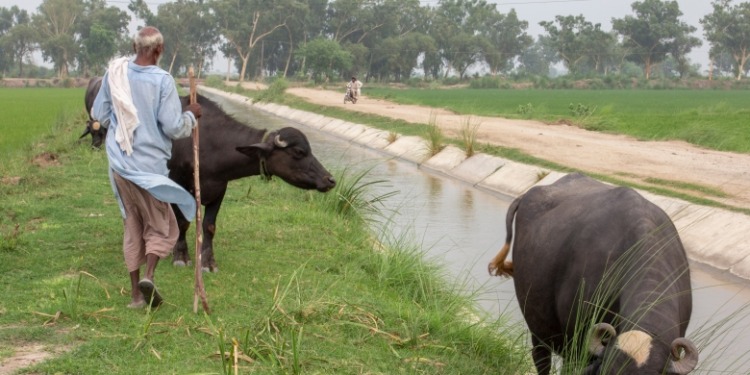On June 30, 2022, the World Bank’s Board of Executive Directors approved the establishment of a Pandemic Prevention, Preparedness and Response Financial Intermediary Fund (FIF) to focus on critical investments in low and middle-income countries, regions, and beyond, in order to strengthen pandemic prevention, preparedness and response (PPR).
The FIF will complement World Bank financing with strong technical expertise from the World Health Organization (WHO), and both will reach out to other key organizations. While at this point the FIF is a work in progress in setting detailed policies and procedures, these are expected to be in place in three-to-four months, and all indications are that One Health, the interface of animal, human, and ecosystem health, will be included.
The FIF is just the most recent significant signal that the international community recognizes that One Health challenges are a global priority. More about the FIF is described later, but first, let’s place this latest news in context.
Recent Global One Health Events
At the international level
Over the course of the last 12 months, there has been a flurry of international activity relating to One Health – the animal, human, and ecosystem health.
In 2021, the G7 first and the G20 next included statements explicitly recognizing its importance. Four technical bodies, FAO, WHO, OIE (now WOAH), and UNEP agreed on a common definition, enormously helpful in providing a platform for the international community to coordinate policies and programs.

In early June 2022, the Stockholm+50 international meeting was held with an overarching theme: “a healthy planet for the prosperity of all – our responsibility”. Some 1,000 attendees from government, international institutions, NGOs, and the private sector participated. In advance of the meeting, in March 2022, the United Nations General Assembly had approved a Stockholm+50 Concept Note, laying the groundwork for Stockholm+50 which inter alia stated:
“… the meeting offers an opportunity to explore emerging areas in support of a healthy planet. Possible examples include… adopting a wider “One Health” approach to address issues relating to the human-animal-ecosystem health interface…” (bolding added)
The President in his final remarks to the plenary, noted that Stockholm+50 has “emphasized the global interconnectedness of the environment and the need to collectively address the triple crisis of our common environment – climate change, biodiversity loss and pollution – for present and future generations” (bolding added).
UN technical agencies have been engaged and active at this and other international meetings.
For example, at the Stockholm+50 meeting, while One Health was of interest to many, the World Health Organization (WHO) incorporated it in its “Manifesto prescription 1: Protect and preserve the source of human health”, noting:
“…[the] increase risk of emerging infectious diseases in humans – over 60% of which originate from animals, mainly from wildlife” and the need to “limit control human-wildlife contact to reduce the risk of infectious diseases, including zoonotic and vector-borne diseases.”
Or consider the G7 recent meeting in Germany that finished on June 28th. While there were issues considered of immediate and highest priority – pledging $600 billion for developing countries and urging unity on Ukraine – the subject of pandemics and One Health was also on the table. In its final and detailed communiqué, One Health was explicitly addressed as follows:
“We will continue to promote the prudent and responsible use of antibiotics in human and veterinary medicine, raise awareness on sepsis, lead in the development of integrated surveillance systems based on a One Health approach, concurrently advance access to antimicrobials, strengthen research and innovation for new antibiotics in international partnerships, and incentivise the development of new antimicrobial treatments with a particular emphasis on pull incentives.”
In the scientific community
Many developed and developing scientific organizations around the world have expressed support for One Health.
In May 2022, the U.S. National Academy of Science produced a set of recommendations that included the following:
“To address the global challenges posed by zoonotic diseases and antimicrobial resistance, the academies call on the G-7 governments to provide leadership in implementing a One Health approach, which mobilizes multiple sectors, disciplines, and communities at all levels of society to recognize the interconnectedness of health and ecosystems and to work together to foster well-being and tackle threats to health. The approach should be implemented at global, regional, national, and local levels, the statement says. G-7 governments should also seize opportunities of new digital technologies and artificial intelligence for the prevention and control of zoonoses and antimicrobial resistance and foster research and development focused on the One Health approach. artificial intelligence for the prevention and control of zoonoses and antimicrobial resistance and foster research and development focused on the One Health approach.”
Financial resources for One Health: More still needed
While other bilateral and multilateral institutions have and will continue to provide funding, the World Bank’s new FIF will provide an important focal point going forward.
Developed with leadership from the United States and from Italy and Indonesia as part of their G20 Presidencies (past and present respectively), and with broad support from the G20 and beyond, over $1 billion in financial commitments have already been announced for the FIF, including contributions from the United States, the European Union, Indonesia, Germany, the United Kingdom, Singapore, the Gates Foundation and the Wellcome Trust.
This is good news but the amounts fall far short of the estimated $10.5 billion per year for the next five years.
Among critical needs, the FIF plans to address are strengthening capacity and capability gaps at country and local levels in core domains as listed by the WHO International Health Regulations (2005) and the World Organization for Animal Health (WOAH).
These include:
1) disease surveillance;
2) laboratory systems;
3) emergency communication and management;
4) community engagement.
Needs will be contextual and country-specific, and financing priorities would be based on country-driven assessment and coordination efforts and guided by the plans and priorities of beneficiaries and One Health principles.”
More details of what, how, and where these new resources are to be used were not spelled out in the announcement. This will follow in the days to come. Expect the One Health community to be closely following details as they emerge.
What happens next?
Crucial components appear to be in place for a major One Health take-off.
As mentioned, the international community has expressed multiple supportive policy statements and engaged in many conferences; there is vocal and growing support from the scientific community; and substantial new funding, as in the case of the FIF, either exists, is pledged, or is under discussion.
These are all hopeful signs that momentum for the One Health approach is growing in academic, technical, and financial circles, and that low and middle-income country acceptance is increasing – each a necessary condition to transit to large-scale concrete actions.
But this will only be a reality if the One Health approach is embraced as a core and sustained component of international and national cooperation, coupled with local and external investment.
If this comes to pass, we will all be better able to avoid or deal with known and future infectious diseases, any one of which could become the next epidemic or far worse, pandemic.
Editor’s Note: The opinions expressed here by Impakter.com columnists are their own, not those of Impakter.com — Featured Photo: Buffaloes at an irrigation canal Credit: Flore de Preneuf, World Bank, from the World Bank blog post: Safeguarding Animal, Human and Ecosystem Health: One Health at the World Banks Note: The World Bank reported in June 2021 that it “has over US$ 1.5 billion on One Health in operations, including livestock and agriculture projects that include One Health…” (bolding added)










